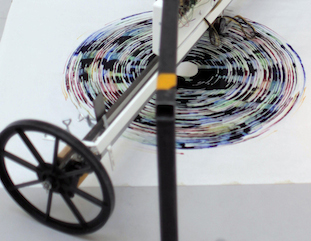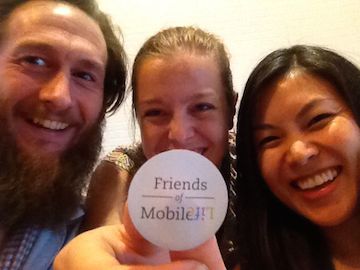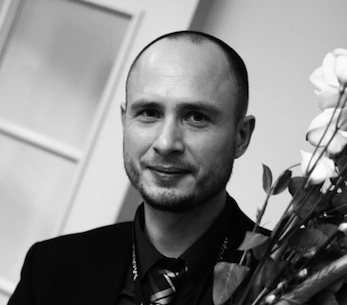July 2014 Newsletter
What's going on?
What's going on?

Connected Things: “After the Internet and mobile phones, we face the next technological revolution – the Internet of (IoT). The possibilities are enormous. ... Our lives will be revolutionized once again – just as when computers entered our homes and lives. This time, we know with greater certainty in which direction the development is going. More and more things are going to connect to the internet.”.
(Read more)
Have you checked out our video library?
mobilelifecentre.org/video
mobilelifecentre.org/video
Q&A with ROGER BENGTSSON, TeliaSonera: “‘Disruptive
product innovation’ is still key but to a small degree done in-house.
These are the things that Mobile Life and other players work with
and which we want to partner with. They have their sensors to the
ground to understand and experiment with what’s coming next. Even
if we don’t do a lot in early phases anymore, it’s still as important to
understand where the world is going.”
(Read more)
+
Always explore!
Always create!
Always enjoy!
- Mobile Life
Always create!
Always enjoy!
- Mobile Life
Calling For A Future of Connected Things
“After the Internet and mobile phones, we face the
next technological revolution – the Internet of Things
(IoT). ... The possibilities are enormous. ... Our lives
will be revolutionized once again – just as when
computers entered our homes and lives. This time,
we know with greater certainty in which direction
the development is going. More and more things are
going to connect to the internet”.
So wrote Kristina Höök and Darja Isaksson, in their recent Debatt article in Dagens Nyheter www.dn.se/debatt/gor-sverige-till-testbadd-for-sakernasinternet : “Gör Sverige till testbädd för sakernas internet”, “Sweden to become a testbed for the Internet of Things”, published 2014-03-03].
Höök, director of Mobile Life and professor in interaction design at the Royal Institute of Technology (KTH), joined Isaksson, the founder of the IT company Ziggy Creative Colony, to write the opinion piece for DN’s Debatt pages. Their main point: “Sweden needs to take a national approach. One suggestion is to make Sweden a global test bed for IoT-driven innovation”.
Mobile Life’s partners see an enormous number of things that will communicate with each other in the future: Ericsson sees 50 billion items connected to the Internet, and Telia, 300 million by 2020. That future is not far from now. Already, our mobile phones and other handheld devices are connected, as are items with GPS or satellite hookups, including anything that can tell us about the weather. Soon our cars will be online and talking to each other, as will the electronic devices in our homes and hospitals.
But Höök and Isaksson wrote that while companies like Google and Apple, and countries such as China, have plans for how to engage in the future Internet of Things, Sweden does not. Their intent in the Debatt article was to call for a national information policy in Sweden and plans to make the country a testbed for future services, data collection and more.
“Sweden has long been an international model for openness. We are accustomed to free access to information and ensure access principle as a matter of course. Sweden should demonstrate openness also belongs in the IT world - and that transparency can be combined with respect for personal privacy”, they wrote.
That shift will require discussion that leads to practice, in order to “combine openness and participation with regard to privacy”. But Sweden is behind in experimenting at the forefront of Internet research, and “should formulate aims to establish itself as a global test bed for innovations in the Internet of Things”.
To do this, Höök and Isakson proposed incentives and a platform to foster “innovative growth” in schools and businesses in Sweden. Private and public stakeholders will need incentives to share their information in diverse areas, including real estate, energy, healthcare, commerce, and more. “Public organizations should take the lead. Incentives could include tax deductions for investments. We also need a strategy for managing information”, they wrote. Links between academia and industry should also be fostered, to link innovative growth and investment in both schools and industries. Höök and Isakson cited
So wrote Kristina Höök and Darja Isaksson, in their recent Debatt article in Dagens Nyheter www.dn.se/debatt/gor-sverige-till-testbadd-for-sakernasinternet : “Gör Sverige till testbädd för sakernas internet”, “Sweden to become a testbed for the Internet of Things”, published 2014-03-03].
Höök, director of Mobile Life and professor in interaction design at the Royal Institute of Technology (KTH), joined Isaksson, the founder of the IT company Ziggy Creative Colony, to write the opinion piece for DN’s Debatt pages. Their main point: “Sweden needs to take a national approach. One suggestion is to make Sweden a global test bed for IoT-driven innovation”.
Mobile Life’s partners see an enormous number of things that will communicate with each other in the future: Ericsson sees 50 billion items connected to the Internet, and Telia, 300 million by 2020. That future is not far from now. Already, our mobile phones and other handheld devices are connected, as are items with GPS or satellite hookups, including anything that can tell us about the weather. Soon our cars will be online and talking to each other, as will the electronic devices in our homes and hospitals.
But Höök and Isaksson wrote that while companies like Google and Apple, and countries such as China, have plans for how to engage in the future Internet of Things, Sweden does not. Their intent in the Debatt article was to call for a national information policy in Sweden and plans to make the country a testbed for future services, data collection and more.
“Sweden has long been an international model for openness. We are accustomed to free access to information and ensure access principle as a matter of course. Sweden should demonstrate openness also belongs in the IT world - and that transparency can be combined with respect for personal privacy”, they wrote.
That shift will require discussion that leads to practice, in order to “combine openness and participation with regard to privacy”. But Sweden is behind in experimenting at the forefront of Internet research, and “should formulate aims to establish itself as a global test bed for innovations in the Internet of Things”.
To do this, Höök and Isakson proposed incentives and a platform to foster “innovative growth” in schools and businesses in Sweden. Private and public stakeholders will need incentives to share their information in diverse areas, including real estate, energy, healthcare, commerce, and more. “Public organizations should take the lead. Incentives could include tax deductions for investments. We also need a strategy for managing information”, they wrote. Links between academia and industry should also be fostered, to link innovative growth and investment in both schools and industries. Höök and Isakson cited

the examples of Norway, which measures digital literacy alongside reading, writing and math, and the United States, which includes IT development in schools. They make a call for including computer and digital literacy in schools to get young people thinking creatively about digital subjects, in order to foster future innovators and entrepreneurs who will be living and working in this new technologically linked ecosystem.
The Debatt article got a response (as intended, one might argue): Anna-Karin Hatt (C), the Swedish Minister of IT and Energy, replied in Debatt several days after publication of the original opinion piece [http://www.dn.se/debatt/regeringen-satsar-pasakernas-internet/: “Regeringen satsar på sakernas internet”, or “The Government is investing in the Internet of Things” published 2014-03-07”]. “Höök and Isaksson call for action in several areas that are well in line with many of the areas that the government has pointed out”, wrote Hatt. She pointed to a decision made the same day as the original Debatt article to open up the 700 MHz band for mobile broadband and mobile telephony in Sweden, a step forward in advancing communications capabilities in the country. Hatt also cited government efforts to promote the “Smart Grid” to link energy systems to the Internet and each other, to strengthen climate response measures, consumer needs, and more. And Hatt noted government investments in research on the Internet of Things, in particular from Vinnova, one of Mobile Life’s main partners and funders.
Hatt concluded that “new proposals that could strengthen the work are very welcome. I and the current Swedish government are not only aware but also determined to do whatever is necessary for Sweden to remain a leading nation in IT development. Such work requires all good efforts, and therefore I warmly welcome Höök and Isaksson’s continued commitment and contribution in this work”.
Höök comments that opening up the 700 MHz band is just a prerequisite for IoT connectivity – not a vision for how to get Sweden to embrace IoT technologies and to be capable of handling the possibilities. She looks forward to a continued dialogue.


Artistic technology,
technological art
technological art
Vygandas “Vegas” Šimbelis is an artist among
engineers, programmers and academic researchers.
With his perspective as a practicing artist, he studies
how humans and computers interact while making
art together.
His art installation “Metaphone” hooks up humans to a machine reminiscent of Tinguely mechanical sculptures. From the people’s biological data – heart rates, skin signals and sweat – the computer creates abstract paintings. “It’s always different,” Šimbelis says of the final product.
Šimbelis says his research explores the connections between a monotonic machine with rhythms and movement of its own with the “pulsating” changes of the human body, which have “no such monotonic” rhythms. “Participants can feel the difference” when connected to the machine, just as the machine can be controlled through “feeling”, in a sense, the human bodies and emotions connected to it. The human participants also react according to the machine’s “rough” aesthetics, with its exposed gears and open innards.
“People want to have control” over the machine, Šimbelis says, but changing our bodies’ biological signals is really difficult. Heart rate or skin responses change with calming music or violent scenes, but calming one’s self takes practice and time. Truly, the only control a human has over the Metaphone is the choice to stop it from drawing, completing a piece of artwork.
His art installation “Metaphone” hooks up humans to a machine reminiscent of Tinguely mechanical sculptures. From the people’s biological data – heart rates, skin signals and sweat – the computer creates abstract paintings. “It’s always different,” Šimbelis says of the final product.
Šimbelis says his research explores the connections between a monotonic machine with rhythms and movement of its own with the “pulsating” changes of the human body, which have “no such monotonic” rhythms. “Participants can feel the difference” when connected to the machine, just as the machine can be controlled through “feeling”, in a sense, the human bodies and emotions connected to it. The human participants also react according to the machine’s “rough” aesthetics, with its exposed gears and open innards.
“People want to have control” over the machine, Šimbelis says, but changing our bodies’ biological signals is really difficult. Heart rate or skin responses change with calming music or violent scenes, but calming one’s self takes practice and time. Truly, the only control a human has over the Metaphone is the choice to stop it from drawing, completing a piece of artwork.
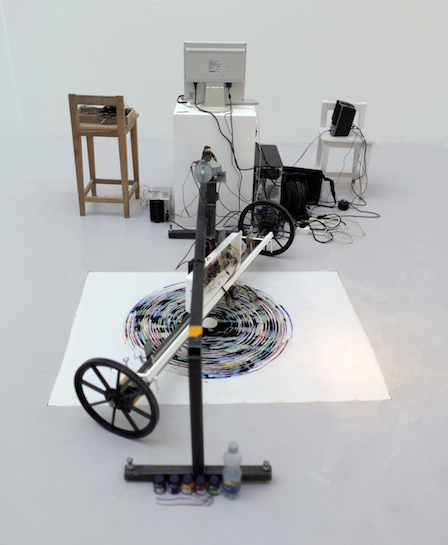


Finding Friends for Mobile Life
Mobile Life is looking for Friends: companies and
researchers who can both contribute and benefit
to Mobile Life research, but might not wish to be
full partners in the Centre. Under the new program,
“Friends of Mobile Life”, half a dozen or more
partners will join together to address the emerging
landscape of Internet of Things (IoT).
The Centre is looking to recruit IT startups, for example, or companies working on consumer products that have never looked at the issues surrounding the IoT with the perspective of IT and Telecom companies. The first Friend, ayond, joined in March, and other companies that plan to sign up are Ziggy Creative Colony and Boris Design. The consulting company, Ayond, assists businesses in their design and technology systems, looking to the future of IoT. (One of the company’s three founders, Thomas Arctaedius, is a former board member of Mobile Life.) Other potential Friends include media or advertising companies with an interest in IoT, but not necessarily an active interest in IT or Telecom, nor experience in those research areas.
Mobile Life will offer these companies the chance to network with each other, as well as with Mobile Life’s current partners. Eventually, the Friends will have a chance to decide if they want to join the researchers as full partners, which requires a higher annual fee.
The recruitment of Friends of Mobile Life comes at a time when the research centre has refocused its plan to study trends for IoT, an important and strategic shift to a topic that is important to the IT and Telecom companies that are currently Mobile Life’s
The Centre is looking to recruit IT startups, for example, or companies working on consumer products that have never looked at the issues surrounding the IoT with the perspective of IT and Telecom companies. The first Friend, ayond, joined in March, and other companies that plan to sign up are Ziggy Creative Colony and Boris Design. The consulting company, Ayond, assists businesses in their design and technology systems, looking to the future of IoT. (One of the company’s three founders, Thomas Arctaedius, is a former board member of Mobile Life.) Other potential Friends include media or advertising companies with an interest in IoT, but not necessarily an active interest in IT or Telecom, nor experience in those research areas.
Mobile Life will offer these companies the chance to network with each other, as well as with Mobile Life’s current partners. Eventually, the Friends will have a chance to decide if they want to join the researchers as full partners, which requires a higher annual fee.
The recruitment of Friends of Mobile Life comes at a time when the research centre has refocused its plan to study trends for IoT, an important and strategic shift to a topic that is important to the IT and Telecom companies that are currently Mobile Life’s
partners, and one that is also of potential interest
to more traditional companies that sell consumer
products.
So far, other media and consultancy companies, cloud-based service providers and hardware and software developers have asked Mobile Life about participating in the Centre’s work, and “unusual” potential partners such as Axfood have also contacted Mobile Life to express interest in the Centre’s work. The move toward IoT also coincides with the continued work with IKEA and ABB as partners. Adding Friends of Mobile Life to the mix will let the Centre increase its impact on the local start-up scene in Stockholm, as well as with new consumer product partners, perhaps as far afield as China and Silicon Valley.
The Centre has a “strong tradition of participatory design” firmly grounded in Scandinavian design tradition. That position opens up opportunities for the development and testing of applications for IoT. Alongside Mobile Life’s recent initiatives on Open Data (see Stockholm City Municipality Initiative: http://www.mobilelifecentre.org/node/110), the new focus on IoT and new Friends could make the Centre unique in the world in this arena.
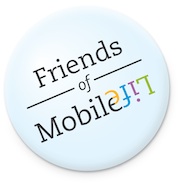


So far, other media and consultancy companies, cloud-based service providers and hardware and software developers have asked Mobile Life about participating in the Centre’s work, and “unusual” potential partners such as Axfood have also contacted Mobile Life to express interest in the Centre’s work. The move toward IoT also coincides with the continued work with IKEA and ABB as partners. Adding Friends of Mobile Life to the mix will let the Centre increase its impact on the local start-up scene in Stockholm, as well as with new consumer product partners, perhaps as far afield as China and Silicon Valley.
The Centre has a “strong tradition of participatory design” firmly grounded in Scandinavian design tradition. That position opens up opportunities for the development and testing of applications for IoT. Alongside Mobile Life’s recent initiatives on Open Data (see Stockholm City Municipality Initiative: http://www.mobilelifecentre.org/node/110), the new focus on IoT and new Friends could make the Centre unique in the world in this arena.



Q&A with ROGER BENGTSSON,
TeliaSonera:
TeliaSonera:
Q: Why work with Mobile Life?
RB: When I joined Telia Research twenty years ago, we were more than 600 researchers. We were in the technical forefront in many, many areas. Since then, TeliaSonera has changed a lot. There are no longer any dedicated research units within TeliaSonera. R&D is now mostly done by other actors in the ecosystem, especially the supplier side. Typically, we buy things from a supplier or partner, which is combined with in-house work, and this is then offered to our customers.
‘Disruptive product innovation’ is still key but to a small degree done in-house. These are the things that Mobile Life and other players work with and which we want to partner with. They have their sensors to the ground to understand and experiment with what’s coming next. Even if we don’t do a lot in early phases anymore, it’s still as important to understand where the world is going.
We have been a partner in Mobile Life since the beginning. We want to be connected in this context. It’s also about corporate social responsibility, i.e. supporting good and important research in our geographical footprint.
Q: What were your expectations for outcomes from the partnership?
RB: Our main focus is on today’s business. But we need to understand what’s coming next. The main expectation from Mobile Life is that we jointly create that understanding. We are open with contributing our knowledge. Then, Mobile Life has the task to come up with disruptive ideas and demos. I would like to be surprised by the findings of what may be possible to do in the not-too-distant future!
We do not expect Mobile Life to take the ideas all the way to a product. But it is very good that Mobile Life support the commercialization of strong concepts.
RB: When I joined Telia Research twenty years ago, we were more than 600 researchers. We were in the technical forefront in many, many areas. Since then, TeliaSonera has changed a lot. There are no longer any dedicated research units within TeliaSonera. R&D is now mostly done by other actors in the ecosystem, especially the supplier side. Typically, we buy things from a supplier or partner, which is combined with in-house work, and this is then offered to our customers.
‘Disruptive product innovation’ is still key but to a small degree done in-house. These are the things that Mobile Life and other players work with and which we want to partner with. They have their sensors to the ground to understand and experiment with what’s coming next. Even if we don’t do a lot in early phases anymore, it’s still as important to understand where the world is going.
We have been a partner in Mobile Life since the beginning. We want to be connected in this context. It’s also about corporate social responsibility, i.e. supporting good and important research in our geographical footprint.
Q: What were your expectations for outcomes from the partnership?
RB: Our main focus is on today’s business. But we need to understand what’s coming next. The main expectation from Mobile Life is that we jointly create that understanding. We are open with contributing our knowledge. Then, Mobile Life has the task to come up with disruptive ideas and demos. I would like to be surprised by the findings of what may be possible to do in the not-too-distant future!
We do not expect Mobile Life to take the ideas all the way to a product. But it is very good that Mobile Life support the commercialization of strong concepts.
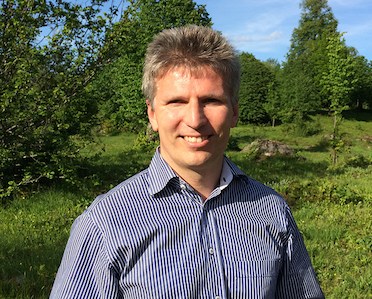
RB: What has worked really well are internships, i.e. when a Mobile Life researcher has worked in our organization with our researchers for some time. We have, for example, had internships regarding camGnomes (a game), More Video (live broadcasting) and the Internet of Things (consumeroriented study).
Q: What’s it like to work with Mobile Life researchers?
RB: It’s a pleasure and fun! They are also focusing on the pleasure and fun perspective, where they have succeeded to create a culture that works in harmony with the mission.
That’s really complementary to our more short-term and usefulness-driven view. What I also like is that they take a strong user perspective in everything they do.
They also experiment a lot, and not only write papers, where they put the ideas into real tangible stuff. Seeing is believing!


Defenders of Research
| Jon Back presented his licentiate thesis, “Designing Activity and Creating Experience: On People’s Play in Public Places”, on 20 November, at Stockholm University. Back focused on the design of play in public places, meaning “both pervasive games and other freer play activities”. Games can “spur many different ways to play”, as different players experience the same activity in different ways, or even as the same player has a different experience of the same game on different occasions. Back used a three-level design framework focusing on game design, activities in the game, and the experiences before and after play, from a player perspective, to examine the “surrounding culture, player preconceptions and the emergent mood within the group” and how all of these together affect the experience of playing. Back will complete his PhD at Uppsala University. | 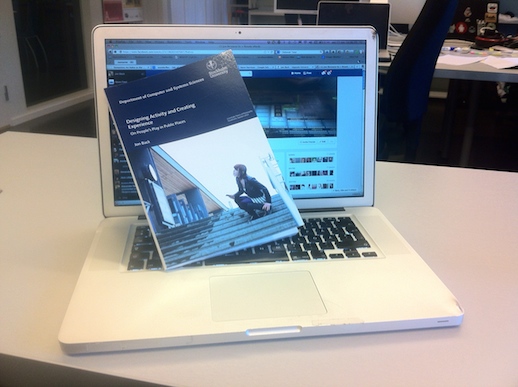 | |
| Elena Márquez Segura presented her licentiate thesis, “Body Games – Designing for Movement-Based Play in Co-Located Social Settings”, at Stockholm University on 6 December. Her research has focused on how games “interweave and entangle” the digital with the real world. She calls the interactions between the two “a concrete fabric of hybrid play: co-located physical and social play”, and proposed a framework for design concepts that she calls “PLAY BOOST”. Márquez Segura drew on her experience co-designing the toy Oriboo, a “limited movementbased game platform”, and with redesigning physical therapy rehabilitation programs for elderly people in an assisted living facility. She used these physical and social activities to examine how to spur play as “free movement within rigid structures”. She will complete her PhD at Uppsala University. | 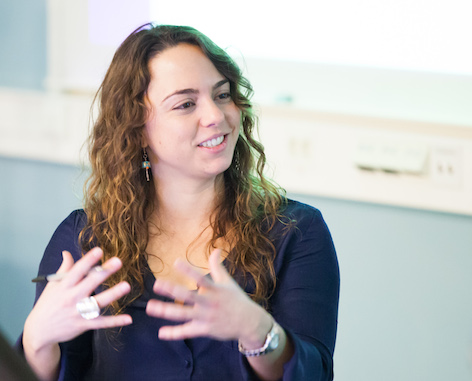 | |
| Mattias Jacobsson successfully defended his PhD thesis, “Tinkering with Interactive Materials – Studies, Concepts and Prototypes”, on 16 December at the Royal Institute of Technology (KTH). His research looked at human-computer interactions through design and physical objects, focusing mainly on robotics in consumer settings (soda.swedish-ict.se/5623/1/Tinkering_Thesis_Complete.pdf). For example, Jacobsson looked at everyday settings and interaction with robotic artifacts to design novel interfaces for interaction: ActDresses reflect different states (think “dog collar” for “guarding”, or “pyjamas” for “sleep mode”), or costumes that personalise a Roomba autonomous vacuum cleaner. Jacobsson continues as a researcher at SICS, working on projects in Mobile Life such as Material Explorations and Internet of Sports. | 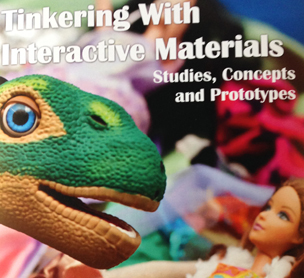 | |
| Elin Önnevall successfully presented her licentiate thesis “Television Practices – Ethnography, Television and User Practices” on 21 February, at Stockholm University’s Department of Computer and Systems Sciences (DSV). Önnevall is a social anthropologist, and her research includes work with Mobile Life’s LiveNature project [see previous newsletter: (www.mobilelifecentre.org/newsletters/January). She has followed amateur video producers to see how they work in the field, for the project Long Tail TV (www.youtube.com/watch?v=WmP-TcilSUk). Önnevall has worked with other researchers to examine how motion-sensing screens will change how people gesture naturally or socially while watching television, and how viewers might navigate through interactive high-definition panoramic television broadcasts, in order to make sense of all the information available with this emerging technology. | 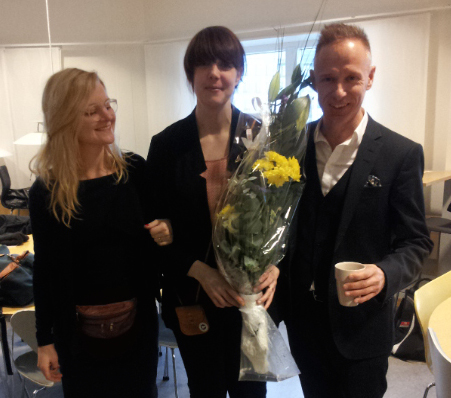 | |
